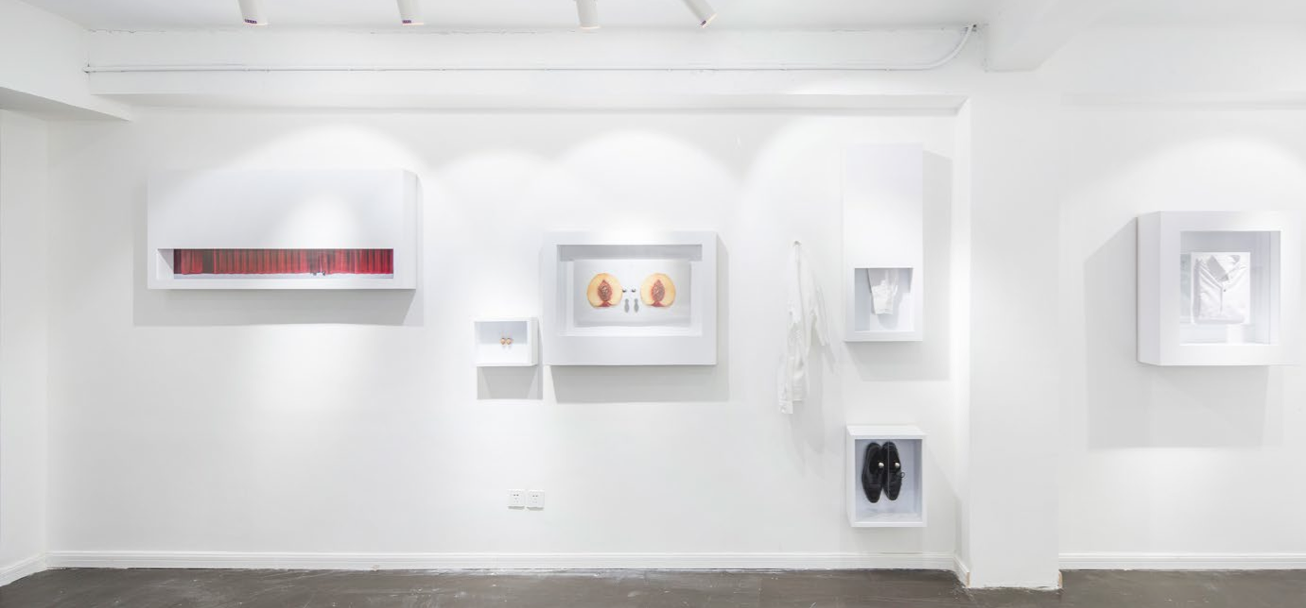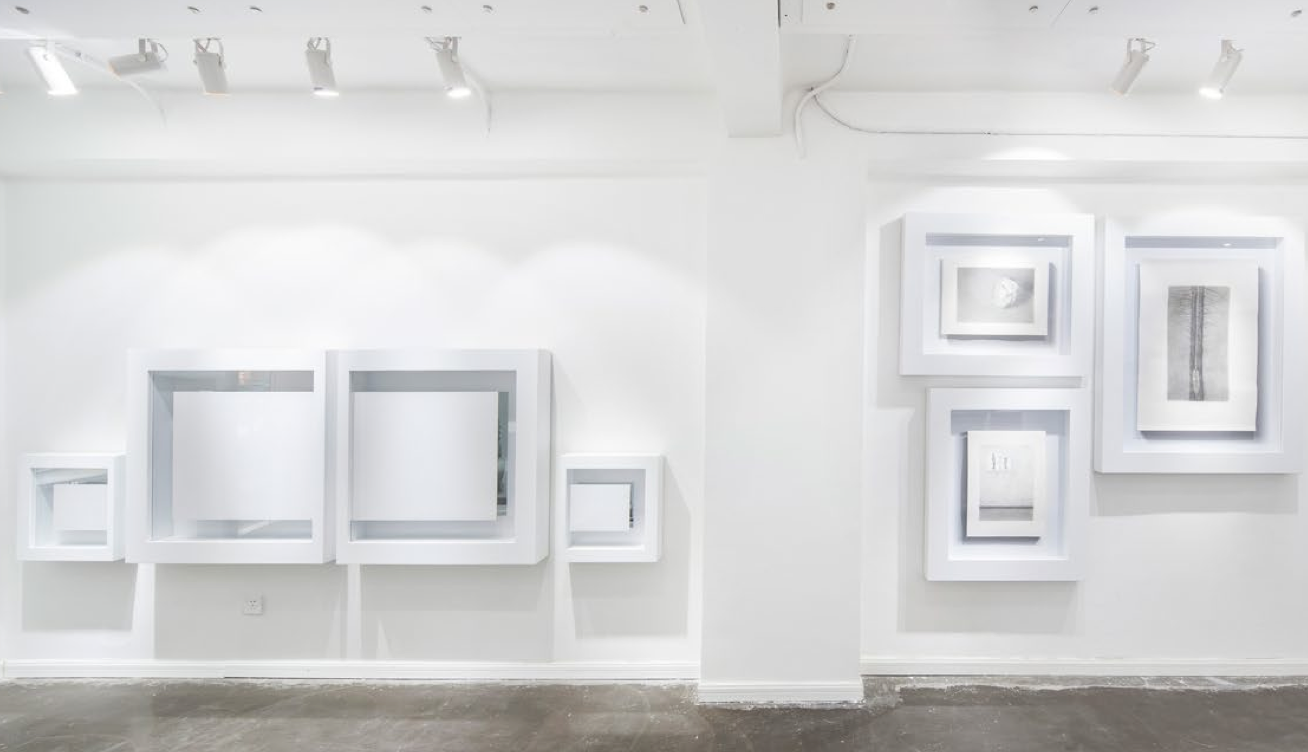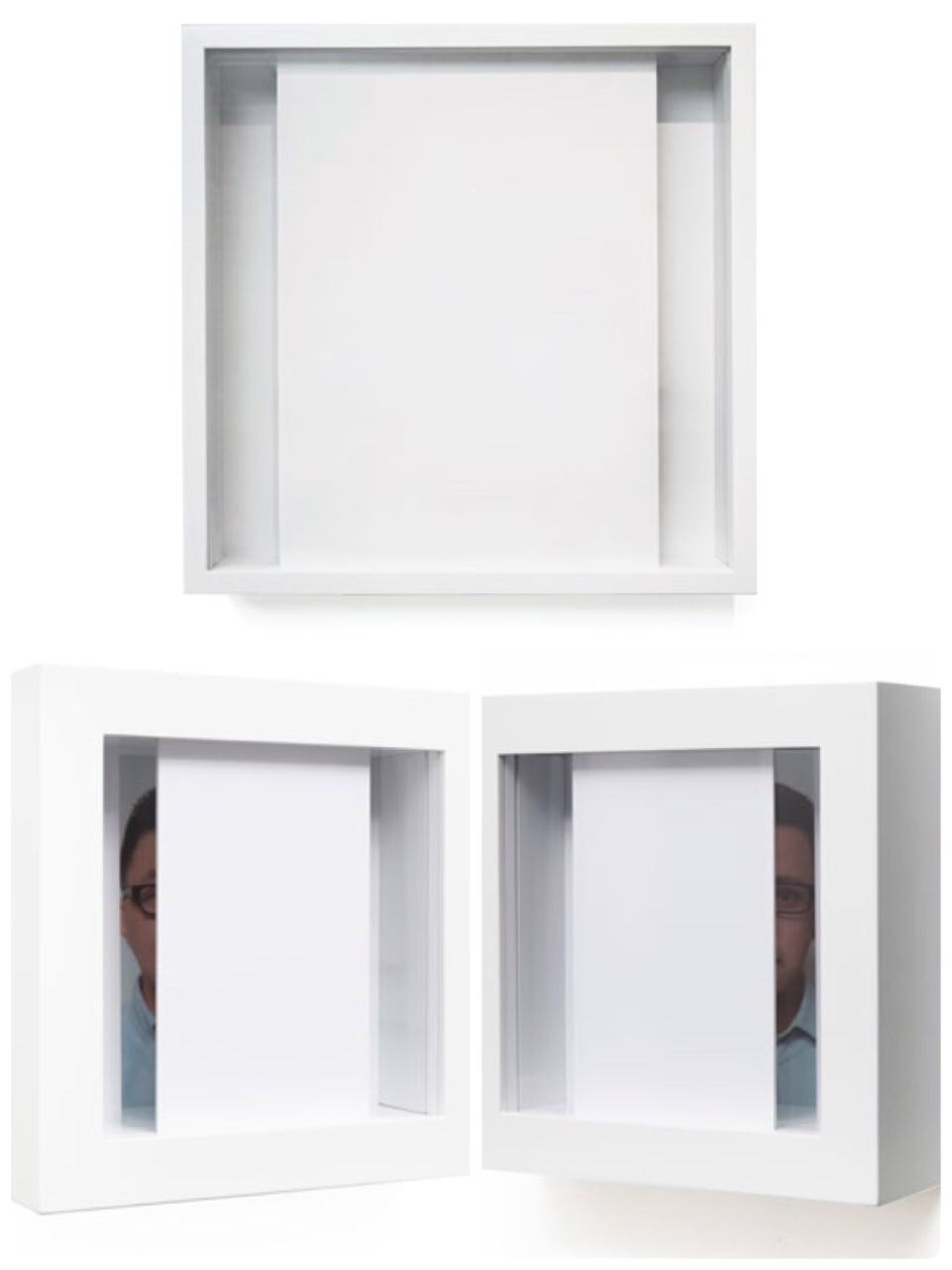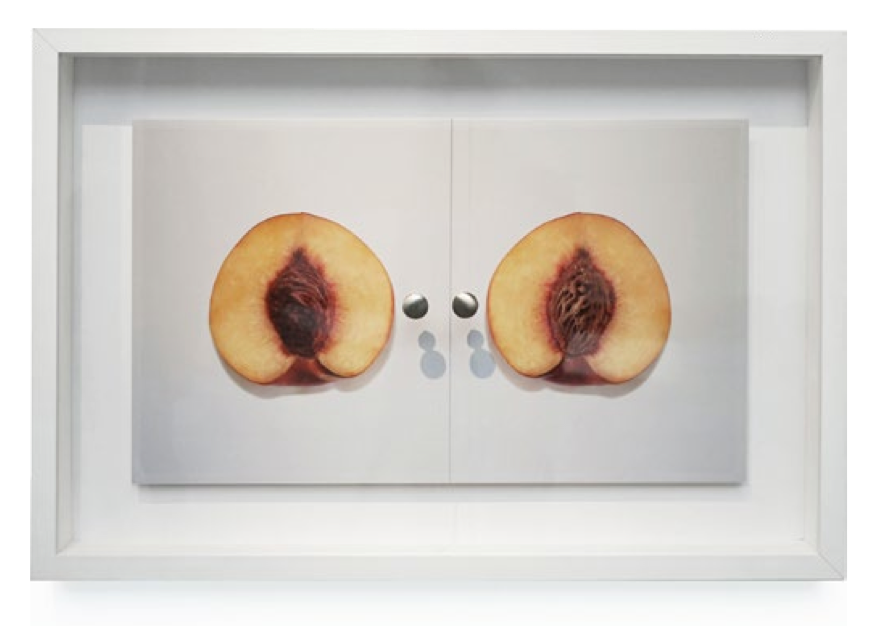Propinquity, on “Chi Peng: I am a Little Nervous Towards a World that is Hidden”
| November 4, 2015

Tucked away in the serene creative space of Pure Collective on Yuqing Road in Shanghai, Chi Peng’s solo exhibition “I am a Little Nervous Towards a World that is Hidden” is sensitively explicated by the show’s curator Enrico Polato. The objects ensconced in their pristine curio cabinets, as well as the black and white pencil drawings, mark a departure from the artist’s earlier oeuvre of bold photographic works that had catapulted him to fame while still a graduate student at Beijing’s Central Academy of Fine Arts. Chi Peng’s “Consubstantiality” series (2003) had provoked discussions about gender construction, while “Me, Myself and I” (2003-2010) unapologetically claimed his openly gay identity. Perhaps overwhelmed by the unexpected attention, the young artist went into quiet seclusion as an adjunct lecturer of photography at his alma mater. According to Polato, the artist did not produce new works since 2013 till this year.

Chi Peng’s current solo exhibition reflects the circumspect thought of the reticent artist who seeks propinquity with the viewer in spite of their veiled premise. The portrait One Faces (2015) presents a composite countenance of Chi Peng and his partner of many years. Each halves are not only conflated into a single portraiture but are obliquely hidden from view by a white panel that comes between the viewer and the image. One has to physically traverse from one side of the frame to the other to observe the distinctive features, which only becomes noticeable upon close examination.

Wood, C-print, acrylic glass, mirror, two people, encouragement
Courtesy of the artist
Accordingly, the notion of fracture and unity is reified and dispersed throughout the exhibition. The most perceptible is the Divided Peach (2015), a C-print of an identically split peach that is encased in a glass cabinet. The image evokes a historical account in the text Han Feizi, presumed to date from the mid-third century BCE, where a subject audaciously offered the king a peach he had half eaten. Rather than being outraged by this impropriety, the king praised his servant’s love and consumed the remainder of the peach. This tale underscores one of the main tenants of Confucianism – the harmonious relationship between the ruler and subject. Yet, later interpretations have argued the lore as one of the earliest recorded accounts of same-sex love in China, where until 1997, homosexuality was illegal.

Wood, C-print, acrylic glass, Photoshop, copper, historical gossip
While homoerotic subtext have been hinted at within Chinese classical literature, Bret Hinsch’s detailed study, The Passions of the Cut Sleeve: The Male Homosexual Tradition in China (1990) provided a revisionist examination of venerated literary traditions. In a similar move, Chi Peng’s paired display Breaking Sleeve (2015) and Broken Sleeve (2015) references a tale that is now generally acknowledged as a paragon of homosexual yearning, where Emperor Ai of Han Dynasty gently tore off the sleeve of his own robe so as not to awaken Dong Xuan, a minor official, who slept peacefully on his arm. Symbolizing this unconditional love of self-sacrifice, a white dress shirt, Breaking Sleeve, hangs on the wall juxtaposed with its sundered sleeve, Broken Sleeve, mounted in a white glass box. Both pieces curiously incorporate “historical gossip” as its shared medium. This metaphorical materiality underscores myth and reality that are inherent in grand historical narratives. According to Polato, Chi Peng’s “historical gossip” are “allusions derived from historical facts that have reshaped the way society translates metaphors into stereotype (or vice versa) to define attitudes that are popular within, but not limited to, the Queer world.”

Broken Sleeve, 2015
Wood, C-print, acrylic, glass, fabric, historical gossip, casualty
RIGHT:
Breaking Sleeve, 2015
Fabric, historical gossip, tradition
The understated ambience that resonates throughout the exhibition is that of a host inviting guests to the privacy of his interior chamber. There is the heightened sense of impeccable orderliness. Yet, the conspicuous panels obstructing many of the works are a reminder that we are not entitled, but rather privileged, to witness this carefully guarded space that pays tribute to love and the ideals of love. Like the One Men Show (2014), an elongated photograph with a pair of black shiny loafers emerging from beneath the lush red velvet curtain, we may not be privy to the entire story, but we are politely welcomed to have a peek, where what remains hidden can offer a counter-narrative.

Wood, C-print, acrylic glass, fear

